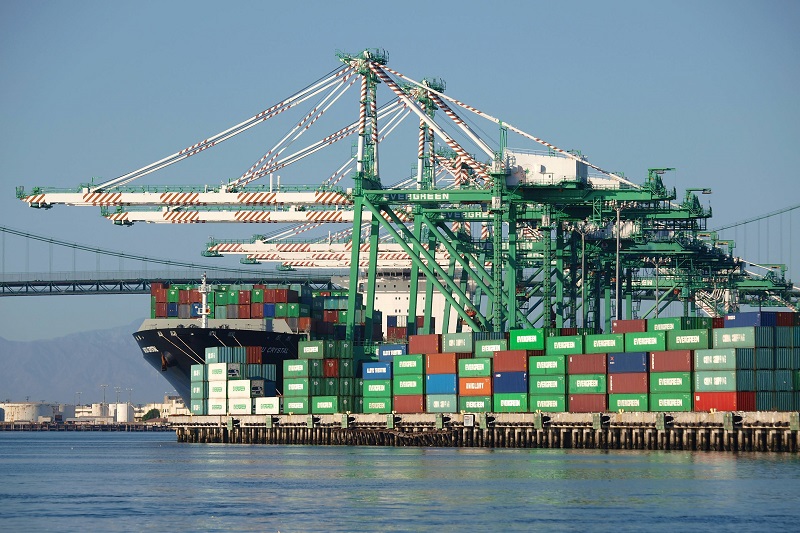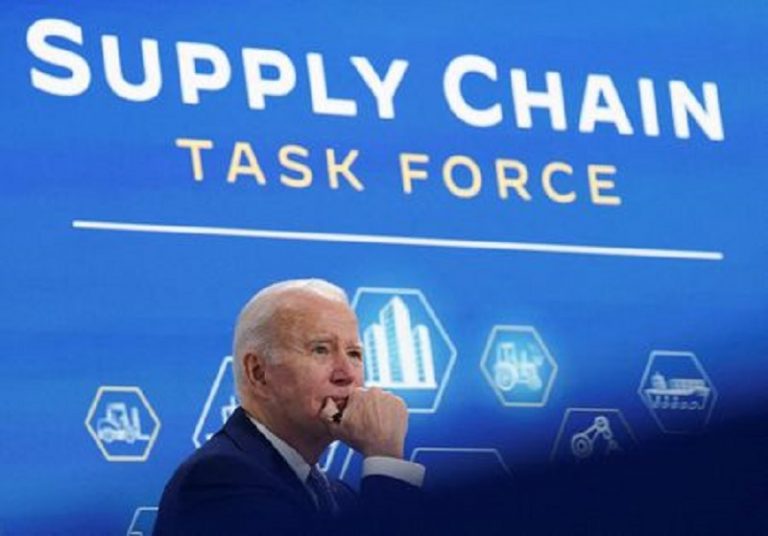
January 27, 2022 | sundance |
We have been tracking the issue of U.S. port congestion, supply chain crises and the White House supply chain initiatives since they first surfaced last fall. We finally have full data to review, and what we see is very disturbing. Not only was the White House supply chain effort a fraud, but they also manipulated the port system to give a false impression of the U.S. economy.
Let’s start with the latest issue.
For several weeks, we have been trying to figure out why the Port of Los Angeles (POLA), our nation’s busiest and most valuable port, had delayed their reporting for December.
Normally they update their container statistics and port efficiency/productivity results between the 10th and 15th of the month. However, this month the data was delayed by several weeks.
When we finally grew frustrated and asked the POLA about this ridiculous delay, they responded January 25th, saying: “Good morning. Data from one vessel has delayed final numbers. We plan on releasing numbers today or tomorrow.”
The POLA justification and timing seemed odd, and their explanation seemed fishy. One container ship manages to delay the entire POLA result? However, this morning after checking and seeing still no result we realized what was going on.
The Bureau of Economic Analysis released the U.S. 4th Quarter GDP result (link). The value of imported goods is a deduction to the U.S. GDP. If the biggest port in the U.S. holds back their import cargo data, the resulting information cannot be deducted from the GDP. Missing data gives an artificial outlook for the GDP. Put another way, the 4th quarter GDP is inflated by the missing deduction.
From the position of the Biden administration, there is a perverse economic motive to keep all those import cargo ships from arriving.
Would the Port of Los Angeles intentionally hold back data in order to help the White House give a false and more optimistic impression of the U.S. economy? At first blush it might seem a stretch, but then – as if on cue – a few hours after the BEA made the public release, suddenly the Port of Los Angeles released their December data. In politics timing is never coincidental.
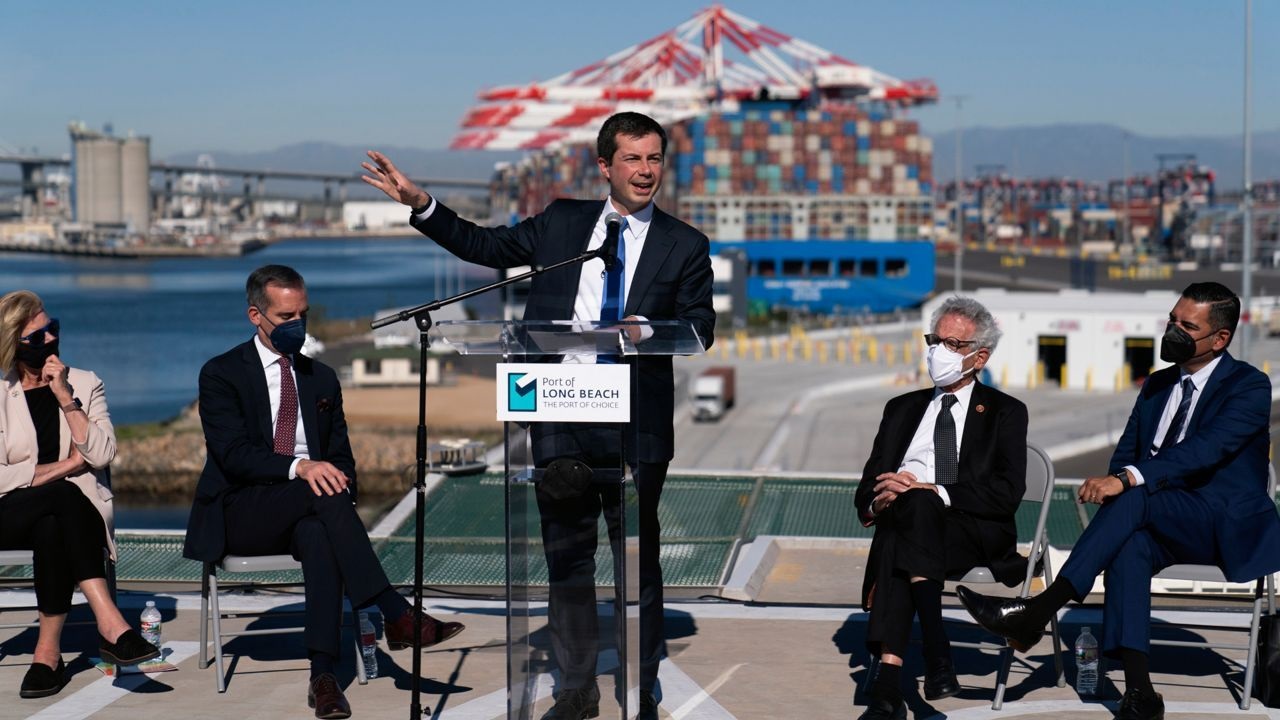
Yes, it is entirely possible, I would actually say likely, the BEA fourth quarter outlook is skewed by a bunch of factors, one of them being the missing December import data from Los Angeles.
This suspicion increases when we realize the ideological outlook behind the people running the Port of Los Angeles, the politics of California and the influence of White House supply chain taskforce member John Porcari as Ports Envoy.
Additionally, right about the time POLA would normally generate their data in January, Transportation Secretary Pete Buttigieg traveled to the Port of Los Angeles for a supply chain initiative briefing and press conference.
Given the political issues and importance at stake for Joe Biden – yes, it is entirely likely the White House influenced a December port reporting delay for two reasons. First, to help the illusion of better economic picture; and second, because the White House port supply chain initiative was a fraud.
The second point takes us back to the reason why we were tracking this issue to begin with.
In October and November, the Biden administration was touting its port supply chain initiative as a fix to the backlog at the ports. {October Initiative Here} and {November Update Here}. Calling it, “a series of public and private commitments to move more goods faster, and strengthen the resiliency of our supply chains, by moving towards 24/7 operations at the Ports of Los Angeles and Long Beach.”
Despite these claims from the White House, the ports never moved forward to 24/7 operations. Factually, the operational productivity at both the Port of Los Angeles and the Port of Long Beach dropped.
The ports handled less cargo, off-loaded less cargo and did absolutely nothing to remove the port congestion that was created by the local and state environmental ordinances.
On January 19th, the Port of Long Beach (POLB) released its data {LINK}. What the statistics show, is that less cargo is being handled now than it was when the 24/7 port operation announcement was made:

As noted earlier today, the Port of Los Angeles finally released their data {LINK} and the same is true (see below).
The White House claimed hours of operation expanded to increase capacity, yet fewer containers are being handled at both ports.
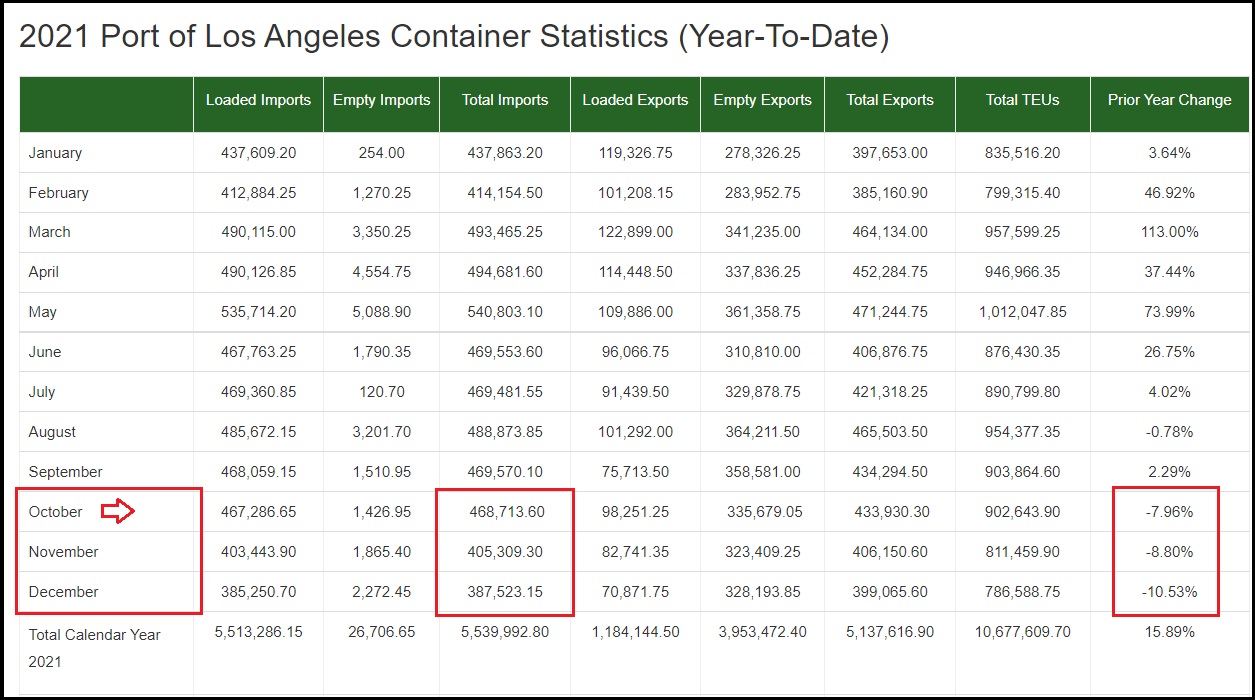
The outcomes speak for themselves. Both the Port of Los Angeles and Port of Long Beach handled less cargo and fewer containers in the two months after the “new expanded operations” were announced, than in October when the expanded supply chain operations were announced. There is no improvement at all. Less cargo is being handled.
Perhaps the administration did not expect anyone to check when they claimed on November 29th:
“The Ports of Los Angeles and Long Beach—which handle 40 percent of the country’s containerized imports—continue to show improvement in moving containers out of the docks and into warehouses.” [White House link]
Despite what the White House Supply Chain Disruption Taskforce is claiming, the actual records from the ports do not concur. Someone is clearly lying, and/or not expecting anyone to check. Now, here’s where it gets really Machiavellian.
There’s a strong possibility the White House did not expect anyone to notice, because part of their logistical scheme involved telling the ship operators to wait further offshore so that it would give the illusion of less congestion near port:
CALIFORNIA – […] “Starting Nov. 16, ships waiting to anchor at the ports of Los Angeles and Long Beach will have to wait for a green light about 150 miles from the coast, the Pacific Merchant Shipping Assn., the Pacific Maritime Assn. and the Marine Exchange of Southern California said in a statement Thursday. That compares with 20 nautical miles (23 miles) now. North- and southbound vessels must remain more than 50 miles from the state’s coastline.” (read more)
That announcement was followed up by Oakland port officials when Pete Buttigieg made his trip earlier this month.
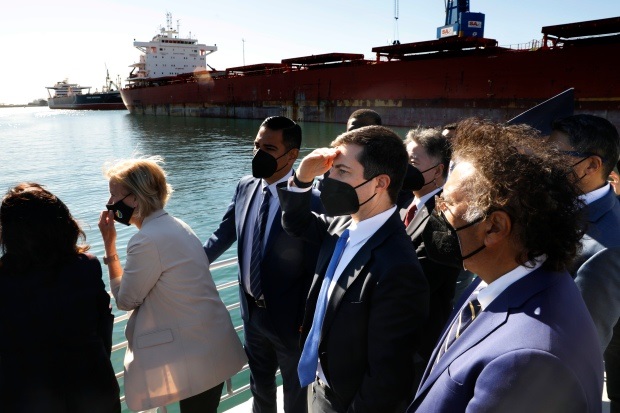
OAKLAND – […] Following its success in Southern California, the new system is being expanded to the Bay Area. Ships will wait 50 miles off the coast in a safety and air quality zone until their scheduled arrival time at the Port.
The new system became effective Monday. Ships will get an arrival time based on when they left their last port of call. Before Monday, ships were given an arrival time when they were fewer than 80 nautical miles from the coast.
The new system will allow ships to take their time getting to Oakland, reducing emissions while at sea. It will also allow more space between vessels at sea, making shipping safer especially in the winter when storms are brewing.
“The resounding success of the new container vessel queuing system in Southern California has set the stage for this expansion to the Bay Area,” said Jim McKenna, president and CEO of the Pacific Maritime Association, which represents maritime companies that do business on the West Coast, in a statement. “This updated system has reduced the number of vessels at anchor near our ports.” (read more)
We call this “Operation Hide the Ships.”
What the White House supply chain taskforce did was move the line of awaiting cargo ships further offshore to make them less visible. Then the White House just started making up talking points about productivity at the ports increasing and capacities expanding; neither claim is based on facts that surface in the actual operations of the ports.
The purpose of telling the ships to await their port time in a queue farther offshore is transparent. The Biden administration wants to give the illusion they eliminated the bottleneck of container ships. Out of sight is out of mind.
Operation ‘Hide the Ships’ allows the administration to make claims about port efficiencies and increased productivity that are abjectly false. The data from the two months after the October announcement shows less container offloading and onloading happened in November and December than happened in the prior month of October when the new initiatives were announced.
To sum this all up. What we have here is an obvious situation where not only did the Biden administration manipulate a false impression of a port supply chain improvement, they also leveraged the import product reporting delay to inflate U.S. economic statistics.
